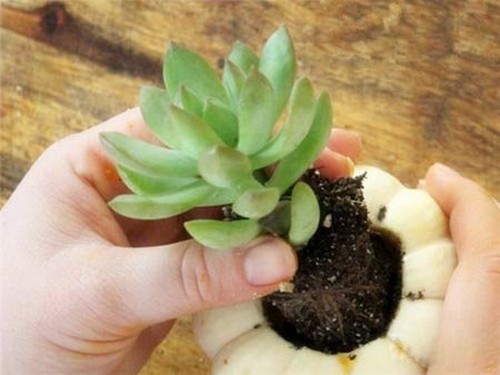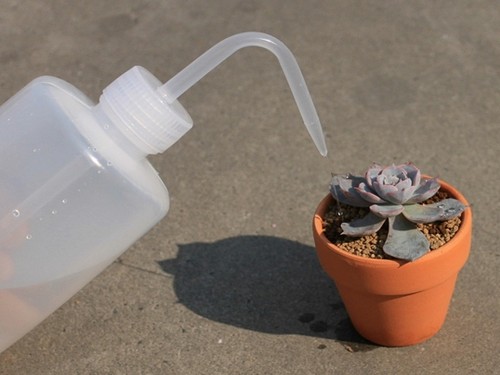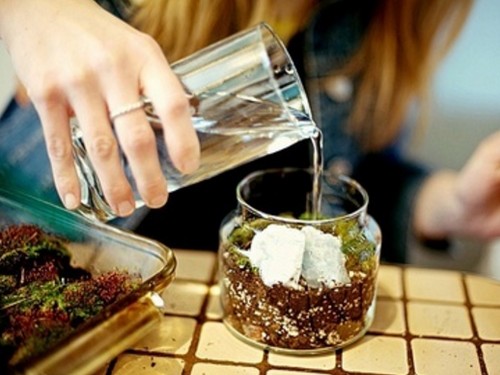How to raise succulent plants? what fertilizer should be used to fertilize succulent plants?
Succulent plants are different from herbaceous flowers, so many flower lovers who raise succulent plants do not know what fertilizer succulent plants use, or whether succulent plants should be fertilized or not, and there are a lot of information about succulent fertilizers on the Internet. this paper focuses on analyzing how succulent plants apply fertilizer from different angles. Generally speaking, fertilizers are divided into three categories: nitrogen, phosphorus and potassium. As we all know, nitrogen fertilizer promotes the growth of plant branches and leaves, phosphorus fertilizer promotes flowering and fruiting, and potassium fertilizer promotes rootstock health. So flower friends can take a look at the proportion when buying fertilizer.
What kind of fertilizer to use for succulent plants, as long as some slow-acting flower fertilizer or organic fertilizer is buried in the bottom of the basin, and the soil is changed regularly, slow-growing succulent plants hardly need extra fertilizer. Because the succulent plant grows several leaves a year, it consumes very little. If you consume less, you will eat less naturally, and there will be dormancy for several months of the year. Therefore, for the demand for nutrients, what is available in the soil is enough.

As a type of fertilizer, it is added to the daily water supplement to promote plant growth and development. This nutrient solution is similar to soilless cultivation, but slightly different from fertilization, its concentration is much lower than that of fertilization. In addition, considering the biological effects of plant nutrient elements, we think that we should mainly supplement phosphorus, potassium and trace elements, and use nitrogen as little as possible. Here is a brief introduction to several commonly used substances:
Potassium dihydrogen phosphate: KH2PO4, a highly efficient phosphorus and potassium fertilizer, its phosphorus and potassium ratio is quite suitable for plant growth, and almost no chemical can replace it. The salt water is slightly acidic and physiologically neutral, so it is very suitable for spraying on the surface of plants. It can promote the metabolism and development of epidermal cells, improve the ornamental appearance, and at the same time supplement the phosphorus and potassium needed by plants. In addition, the compound can be used as a buffer to assist the absorption of other additives without damaging plant cells. The commonly used spray concentration is 0.01-0.1%; it can also be injected into the medulla of plants, which is very effective as a means to quickly supplement the nutritional status of plants, but it is necessary to carry out solution high-pressure sterilization and use concentration 0.4mol/L.
Ferrous sulfate: FeSO4.7H2O, commonly known as green alum and black alum, is used as an acid value regulator, mainly to adjust the pH (pH) of water quality. Generally, it is not used as a means to supplement iron, because the substance is rapidly oxidized to trivalent iron in aqueous solution, trivalent iron ions can not be absorbed by plants, and even have a toxic effect on plant cells. If you need to supplement iron, you need to use chelated iron, such as iron citrate, EDTA iron, etc., the concentration is 0.001-0.1%, can not be used continuously. In addition, ferrous sulfate is called "black alum" because the liquid it ferments with soybeans is black, which is an excellent organic fertilizer and is recommended to be used, but it must be fermented completely, otherwise it will cause air pollution and breed pests.
- Prev

Root trimming skills of succulent plants succulent plants should be watered
Today's topic is to watch light watering. See, light watering is a slang invented by myself. I used to think that watching only watering sounds as cool as Darwin's old-timers' natural selection and survival of the fittest, so I often take it out in front of novice meat friends.
- Next

How to propagate succulent plants the watering method of succulent plants
Many flower lovers think that too much watering will lead to futile growth. In fact, watering is not the direct cause of overgrowth, but the lack of light is the direct cause of overgrowth if the amount of water is still large. Because of the apprentice.
Related
- Wuhan Hospital Iron Tree Blooming Result Was Instantly Frightened by the Gardener Master
- Which variety of camellia is the most fragrant and best? Which one do you like best?
- What is the small blue coat, the breeding methods and matters needing attention of the succulent plant
- Dormancy time and maintenance management of succulent plants during dormancy
- Minas succulent how to raise, Minas succulent plant pictures
- What are the varieties of winter succulent plants
- How to raise succulent plants in twelve rolls? let's take a look at some experience of breeding twelve rolls.
- Attention should be paid to water control for succulent plants during dormant period (winter and summer)
- Watering experience of twelve rolls of succulent plants
- Techniques for fertilizing succulent plants. An article will let you know how to fertilize succulent plants.

